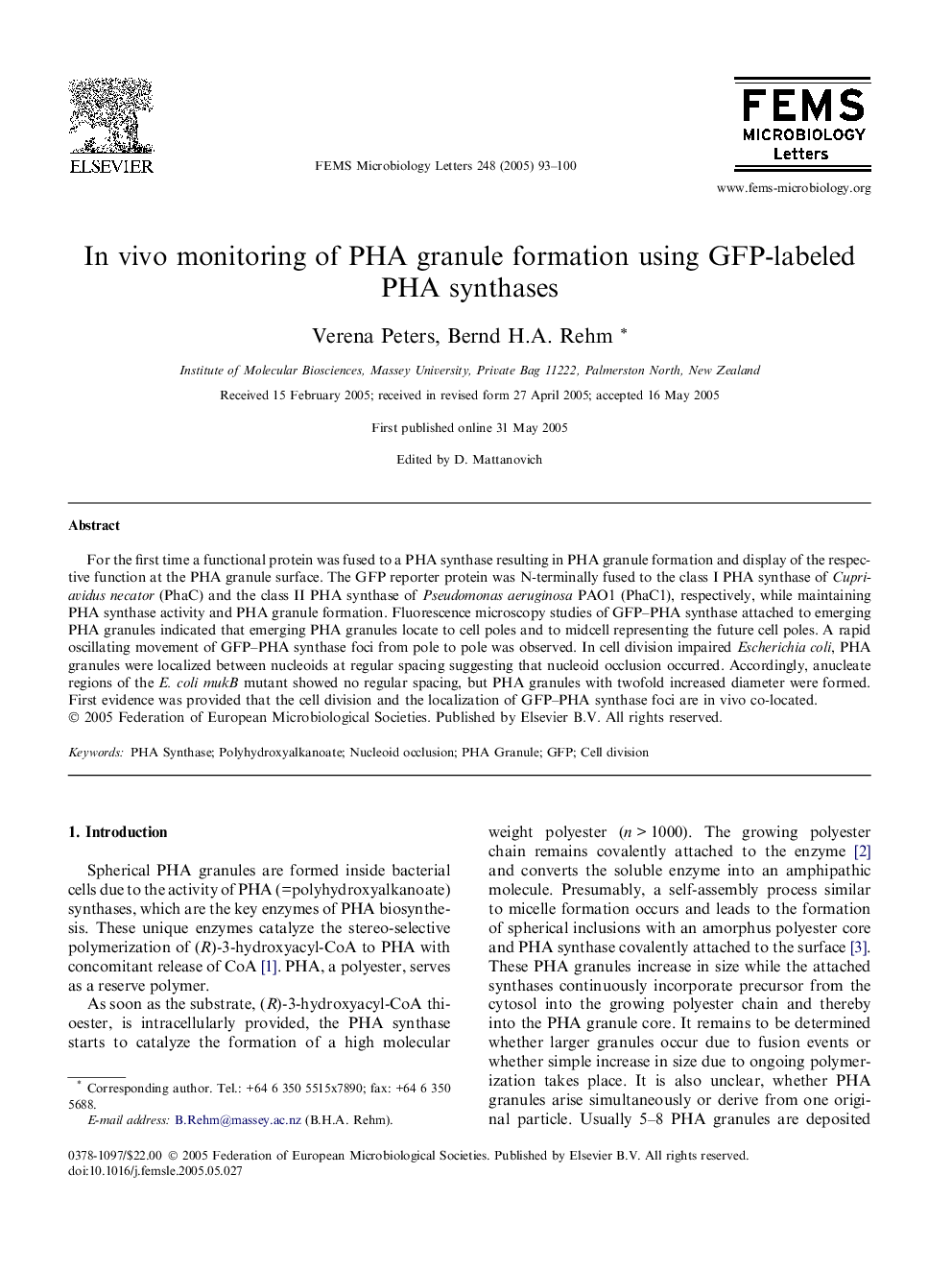| Article ID | Journal | Published Year | Pages | File Type |
|---|---|---|---|---|
| 9121762 | FEMS Microbiology Letters | 2005 | 8 Pages |
Abstract
For the first time a functional protein was fused to a PHA synthase resulting in PHA granule formation and display of the respective function at the PHA granule surface. The GFP reporter protein was N-terminally fused to the class I PHA synthase of Cupriavidus necator (PhaC) and the class II PHA synthase of Pseudomonas aeruginosa PAO1 (PhaC1), respectively, while maintaining PHA synthase activity and PHA granule formation. Fluorescence microscopy studies of GFP-PHA synthase attached to emerging PHA granules indicated that emerging PHA granules locate to cell poles and to midcell representing the future cell poles. A rapid oscillating movement of GFP-PHA synthase foci from pole to pole was observed. In cell division impaired Escherichia coli, PHA granules were localized between nucleoids at regular spacing suggesting that nucleoid occlusion occurred. Accordingly, anucleate regions of the E. coli mukB mutant showed no regular spacing, but PHA granules with twofold increased diameter were formed. First evidence was provided that the cell division and the localization of GFP-PHA synthase foci are in vivo co-located.
Related Topics
Life Sciences
Biochemistry, Genetics and Molecular Biology
Genetics
Authors
Verena Peters, Bernd H.A. Rehm,
